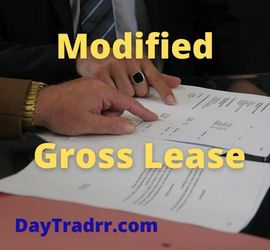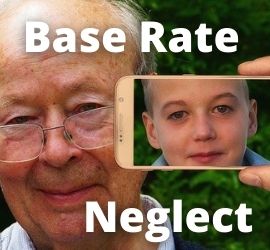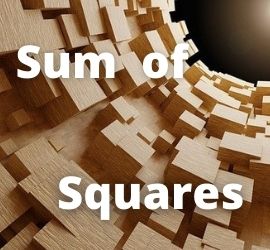Ballpark Figures – What Is a Ballpark Estimate?
 Ballpark figures are used to describe a rough numerical estimation or approximation of the size or value of something that is uncertain. In accounting, they are a rough but reasonable estimate of the worth of something that is otherwise unknown. Salespeople, accountants, and other professionals frequently utilize ballpark estimates to forecast present or future results. Given a specific rate of growth, a financial advisor may use a ballpark figure. The purpose would be to forecast the retirement nest egg a customer would have at some time in the future. A salesman may use a ballpark number as a sales estimate to predict the potential demand a factory should prepare for in the coming period.
Ballpark figures are used to describe a rough numerical estimation or approximation of the size or value of something that is uncertain. In accounting, they are a rough but reasonable estimate of the worth of something that is otherwise unknown. Salespeople, accountants, and other professionals frequently utilize ballpark estimates to forecast present or future results. Given a specific rate of growth, a financial advisor may use a ballpark figure. The purpose would be to forecast the retirement nest egg a customer would have at some time in the future. A salesman may use a ballpark number as a sales estimate to predict the potential demand a factory should prepare for in the coming period.
A ballpark figure is an educated guess providing a reasonable estimate as to the value, size, or timeframe of something. It allows the participating parties to move forward while negotiation or planning is still underway. As a concept, it has applications in business estimates, as well as in everyday life, depending on the circumstances. A ballpark figure is a broad numerical estimate of what something might amount to. It presents a concrete starting point for the purpose of business negotiations, dealmaking, or general brainstorming of ideas.
Ballpark figures can be found in real estate, stock markets, retirement fund estimates, and return on investment estimates. In finance, ballpark estimates are used by brokers and advisors. This is because they allow for greater discretion and less liability during investment negotiations. Because future investment success cannot be guaranteed, ballpark estimates are utilized. They provide an overall expectation of performance without assuming black-and-white responsibility.
Ballpark Figures – A Closer Look
When the actual measurement, size, or amount of something cannot yet be decided, ballpark figures are used. They are useful for planning purposes and to move negotiations forward. A ballpark estimate can be used for day-to-day reasons. For example, determining how much food and beverages will be required for a wedding reception. Or, estimating how long it will roughly take to pay off a new purchase.
Ballpark estimates are frequently used in business. For example, to estimate how much it will cost to penetrate a specific market. Or, how long it would take for a project to be profitable, or for sales to justify a significant expenditure. Ballpark figures may also be used to forecast public acceptance of a concept, technology, or product. Like how many people are expected to be early adopters of new technology. Then, how long it will take them to update that purchase once acquired. Simply put, ballpark figures are educated guesses about values and outcomes that currently lack certainty.
Ballpark figures are useful in setting a foundation for discussion or debate. However, they should be regarded as estimations rather than exact facts. Major commercial and financial decisions should generally not be based entirely on these figures. They function as approximate estimations that should be modified as more complete information becomes available. In sales and marketing applications, these estimates can be routinely exaggerated. Salespeople and other professionals notoriously manipulate these estimates for their own purposes and agendas.
Ballpark Figures vs Detailed Estimates
When clients think about estimates, they often envision a precise total in terms of time and costs. This lets them know the expenses of the product upfront and provides confidence the final figure will be fairly close to the estimate.
- Ballpark estimate – provide you with a basic sense of expenses by presenting a probable range of costs for your project. The goal of this type of estimate is to determine whether or not you can want to undertake the project. Further, it is a starting point for negotiation and what you might additionally need. A rough estimate is frequently supplied for free. Because a ballpark estimate is only a guess, it should not be considered etched-in-stone. Ballpark figures have been known to differ by as much as 50% to 80% from the final figures. A good range to shoot for is plus or minus 20%.
- A detailed estimate – is a thorough estimate in terms of time and costs. It is simplest to prepare for smaller, well-defined projects. For example, a well-defined conclusion and a project duration of 100 hours or fewer. When you get above 100 hours of work, the margin for error begins to sneak in. As a result, such estimations may become seriously wrong unless they are done extensively. If a thorough estimate is wanted, both parties must be on the same page as to exactly what is expected. If you’re risk-averse and working on a tight budget, you might consider requesting a precise estimate. Some companies charge extra for this step but reimburse the cost if the bid is accepted.
Should You Start a Project based on only a Ballpark Estimate?
For the most part, NO. Unless you’re just trying to figure out if your proposal is feasible and how much it will cost. In that case, an approximate estimate may be enough for now. This will give you an idea of what you’re up against and whether you can proceed with the project. If the approximate estimate is feasible, your next step should generally be to obtain a more comprehensive estimate. Alternatively, you may determine that you have enough knowledge and are ready to begin the project with flexible updates. A ballpark estimate may be enough for certain consumers who have more financial means and are less price sensitive. Otherwise, you need to be aware that it is only a preliminary estimate. In other words, the total expenses are not guaranteed.
Example Using Ballpark Figures
Consider the following scenario as an example of using a ballpark number. Assume you’ve hired a contractor to renovate your home. You want to know how much this remodeling would cost. The contractor cannot provide an exact figure. So, you request a ballpark number or estimate from the contractor. He estimates that the overall cost of the remodeling will be about $15,000. However, he stipulates the $15,000 figure is a rough estimate. The actual cost may be a bit higher or lower than the estimate or ballpark figure.
When no one can tell you precisely how much something will cost, they can usually offer you a ballpark amount. Although not an exact figure, it provides an expectation of where the final total will be. As a result, it aids in providing an idea of the range of funding that may be expected for a project. It is therefore used as a starting reference point. It assists people in determining whether they are willing to invest $13,000 – $17,000 on repairs and upgrades.
Up Next: What Is a Modified Gross Lease?
 A modified gross lease is a rental agreement where the landlord and tenant share the responsibility of paying a property’s operating expenses. In general, the tenant pays base rent but also bears a proportional amount of the property’s other expenditures. For example, property taxes, utilities, insurance, and maintenance. A modified gross lease is commonly utilized in commercial premises with several tenants, such as office buildings.
A modified gross lease is a rental agreement where the landlord and tenant share the responsibility of paying a property’s operating expenses. In general, the tenant pays base rent but also bears a proportional amount of the property’s other expenditures. For example, property taxes, utilities, insurance, and maintenance. A modified gross lease is commonly utilized in commercial premises with several tenants, such as office buildings.
Commercial real estate leases are usually classified into two types based on rent calculation methods: gross and net. A modified gross lease is a hybrid between a gross lease and a net lease. A gross lease is structured such that the landlord pays for operational expenditures. With a net lease, the property expenses are passed on to the tenant. Both parties should thoroughly analyze all aspects of the agreement. Leases generally include standard terms. However, a modified gross lease should be interpreted as a one-of-a-kind contract for a specific scenario.




